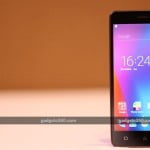
HIGHLIGHTS
Nokia phones were known for their durability, reliability and simplicity
The company has many of the world’s most sold handsets to date
The first Android-based ‘Nokia’ phone is likely to be shown at MWC 2017
Nokia’s reign as the most successful mobile phone brand lasted through the late 90s well into the 2000s, and most of us will have memories of using Nokia handsets. It was devastating for many fans to see the Finnish company’s decline in the mobile phone space in the smartphone revolution that Apple kicked off with the launch of the iPhone in 2007. Next came the exclusivity deal with Microsoft, which prevented Nokia from making Android phones. It didn’t work out and ultimately the mobile division of Nokia was written off by Microsoft just a year after its purchase.
As it stands today, Nokia is merely a familiar brand name licensed to manufacturers HMD Global, who are going to show off its first Android-based Nokia smartphone at MWC 2017. It was recently tipped that the phone will have a Snapdragon 820 SoC, a Quad HD display and Carl-Zeiss lens.
We felt it was apt to take a trip down memory lane, and cherish some of the best-selling Nokia phones that fuelled the mobile revolution. There were a lot of Nokia phones (roughly about 450 of them) released over the years, and we picked our favourites – the most memorable, most iconic Nokia phones – from a shortlist of the best selling phones of all time.
1) Nokia 3310
There’s no way to start any Nokia tribute without first mentioning the Nokia 3310. The oldest phone in this list, the Nokia 3310 was released in 2000, as a reasonably-priced mobile phone that has sold about 126 million units to date. Although the 3310 wasn’t originally advertised as a ‘tough phone’ (unlike say the Nokia 5210), people’s experiences with its durability gave it cult status. This also resulted in people doing weird things with the phone, like putting it under a hydraulic press, or putting a red-hot nickel ball over it. (Spoiler alert: of course the phones didn’t survive).
Beyond the celebrated toughness, it featured a 5-line monochrome display with a simplistic interface navigated by two arrow, one dynamic menu and one cancel/ back key. It also had useful utilities including a calculator, stop watch, reminder, and a bunch of games including the unforgettable Snake II. There were other cool things to do with the 3310 – like composing your own ringtone, or even changing the phone’s appearance with easy-to-swap Xpress-on covers.
The Nokia 3310 was eventually replaced with models like the 3315, which added more features, but kept the familiar appearance to cash in on the 3310’s glory.
nokia 3310 Nokia 3310
Nokia 3310
2) Nokia 1100
If the Nokia 3310 was a big deal then the Nokia 1100 was a phenomenon. It was released three years later, in 2003. This phone holds the title of being the most-sold phone in the world to date – with a whopping 250 million units. It was said to be made specifically for developing countries, as was evidenced by the ‘Made For India’ tag and an India-specific TV ad to go along with it. The Nokia 1100 was dust and splash resistant, came with rubbery non-slip sides, and even had a flashlight on top, which meant it quickly came to be know as the ‘Torch phone’ in India.
It had a smaller 4-line display when compared to the 3310 above, but had a more compact body too. The bundled Nokia BL-5C 850mAh battery had a really long quoted standby time of 400 hours, nearly double to that of the 3310. The Nokia 1100 didn’t sell well because of a laundry list of features – rather it sold well because of an affordable price tag, with durability, familiarity and ease-of-use as being the key drivers, as was the case with many Nokia phones back in the day.
Nokia 1100 full Nokia 1100
Nokia 1100
3) Nokia 6600
While the Nokia 1100 was rocking the low-end of the market, the Nokia 6600 managed to capture the high-end audience share. Selling almost 150 million units to date, the 6600 still is among the Top 10 most sold phones in the world. The marketing of this phone spoke to professionals who wanted a capable smartphone. It was powered by Nokia’s Symbian OS 7.0 (Series 60), with an 104 MHz ARM 9 processor and 6MB of internal memory. Its specs may sound puny today, but it was flagship-grade in 2003.
With the 6600 you could install Symbian and Java compatible applications, with built in capabilities for browsing the Web or checking mails. There was a 32MB MMC card bundled in the package. At the back, you had a 0.3 megapixel camera with 2x digital zoom and video recording too. Apart from the design that meant business, the 6600’s true success will also be accredited to the wide variety of third party apps – everything from MP3 and video players, games, office suites, themes, and other utilitarian ones were supported. Also worth mentioning is that you could transfer all kinds of files over Bluetooth, which was essential considering there was no app store, or ubiquitous high-speed Internet connectivity in India at the time.
nokia 6600 full Nokia 6600
Nokia 6600
4) Nokia 5200 and 5300
The 2000s was the decade of categorisation in mobile phones – you had business phones, music phones, camera phones, and so on. The Nokia 5200 and 5300 fell in the pro-music category that rose to popularity with 30 million units of the duo sold to date. Both phones were released together, and had only small differences.
The 5200 and 5300 were sliders, revealing the numeric keypad with a quick push of the thumb. This enabled manufacturers to accommodate bigger displays without increasing the size of the phone. You could also do cool things such as answering a phone by just sliding the phone open. The Nokia 5300 had useful play/ pause, next, and previous buttons next to the display. The phones also featured FM radio alongside MP3 playback; you could store songs of up to 2GB in size with a separately-purchased microSD card. These phones couldn’t be termed smartphones – as they were powered by Nokia’s Series 40 interface – lacking features such as multitasking, though you could install Java apps.
It’s also probably relevant to mention this today, but the Nokia 5200 and 5300 are from an era when there were no 3.5mm headphone jacks on phones too. Full circle, huh?
nokia 5300 Nokia 5300
Nokia 5300
5) Nokia E71
The Nokia E71 was the company’s fitting response to the rise of the QWERTY-keyboard-wielding BlackBerrys in 2008. This phone had the looks to appeal the working professional (like others in the Nokia’s E series of smartphones). It had well-sized, tactile keys that made typing a breeze, and was a capable performer with a 369MHz ARM processor coupled with 128MB RAM that ran the Symbian 9.2 OS smoothly. There was about 100MB of internal storage, and you could expand it up to 8GB using a microSD card. A highlight feature was a sufficiently large 1500mAh battery that ensured the phone ran for an entire day with heavy use.
Another advantage of buying an E71 back in the day was the freedom from having to pay for BlackBerry’s Internet Service plans, which required people to shell out close to a thousand rupees per month for encrypted push email, something that not everybody needed. With the Nokia E71, you could get a typical 2G plan to use the Internet and send/ receive emails using the built-in mail client or even third-party apps like Gmail (which Google officially made for Symbian). The only downside with the Nokia E71 was the lack of a 3.5mm headphone jack, which was fixed in its successor, the E72 – that also added more processing power, and other features like an optical trackpad, and a better camera.
nokia e71 full Nokia E71
Nokia E71
Of course, apart from these five, Nokia had some other pretty unforgettable phones too, such as the Nokia 3300 music phone which brought in a unique design, which would later be used for the gaming-focused N-Gage as well. The N97 was a marvel that had a full QWERTY keyboard, a 5-megapixel camera, 3G, Wi-Fi, and a massive-for-the-time 3.5-inch display. And who can forget the Nokia 9000 Communicator – a big and bulky phone that was a smartphone before that word existed.
And with this, we end this walk down the hall of fame. Tell us which Nokia phone impacted your life, and how? Share it with us via the comments section below.
Tags: Nokia, Microsoft, Nokia 3310, Nokia 1100, Nokia 6600, Nokia E71, Nokia 5200, Nokia 5300, HMD Global, Nokia N-gage, Nokia 9000 Communicator, Nokia 3300 Music, Nokia N97
[“Source-Gadgets”]










